Related Research Articles

The Palestinian National Authority is the interim self-government body established in 1994 following the Gaza–Jericho Agreement to govern the Gaza Strip and Areas A and B of the West Bank, as a consequence of the 1993 Oslo Accords. Following elections in 2006 and the subsequent Gaza conflict between the Fatah and Hamas parties, its authority had extended only in areas A and B of the West Bank. Since January 2013, the Fatah-controlled Palestinian Authority uses the name "State of Palestine" on official documents.
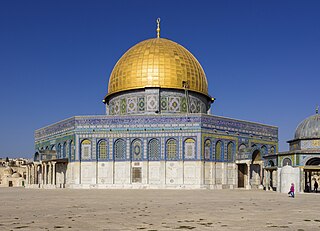
The history of the State of Palestine describes the creation and evolution of the State of Palestine in the West Bank and Gaza Strip.
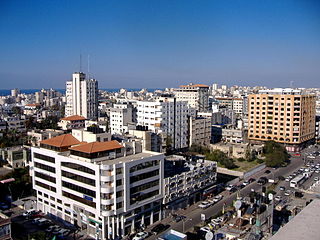
Gaza, also referred to as Gaza City, is a Palestinian city in the Gaza Strip, with a population of 590,481, making it the largest city in the State of Palestine. Inhabited since at least the 15th century BCE, Gaza has been dominated by several different peoples and empires throughout its history.

The term "Palestinian territories" has been used for many years to describe the territories occupied by Israel since 1967, namely the West Bank and the Gaza Strip. More recently, the official United Nations (UN) terminology has been used, occupied Palestinian territory increasingly replacing other terms since 1999. The European Union (EU) also has adopted this usage. The term Occupied Palestinian Territory was used by the UN and other international organizations between October 1999 and December 2012 to refer to areas controlled by the Palestinian National Authority. The EU had utilized a parallel term Palestinian Authority territories occasionally during the same period. The International Court of Justice (ICJ) referred to the West Bank, including East Jerusalem, as "the Occupied Palestinian Territory" and this term was used as the legal definition by the ICJ in the ruling in July 2004.

Palestine, recognized officially as the State of Palestine by the United Nations and other entities, is a de jure sovereign state in Western Asia claiming the West Bank and Gaza Strip with Jerusalem as the designated capital, although its administrative center is currently located in Ramallah. The entirety of territory claimed by the State of Palestine has been occupied since 1948, first by Egypt and Jordan and then by Israel after the Six-Day War in 1967. Palestine has a population of 5,051,953 as of February 2020, ranked 121st in the world.

The Israel−Gaza security barrier is a border barrier first constructed by Israel in 1994 between the Gaza Strip and Israel. The barrier runs along the entire land border of the Gaza Strip. Entry into the Gaza Strip by land is through five crossing points: the northern Erez Crossing into Israel, the southern Rafah Crossing into Egypt, the eastern Karni Crossing used only for cargo, and the other cargo crossing points, the Kerem Shalom Crossing on the border with Egypt and the Sufa Crossing farther north.

Deir al-Balah or Deir al Balah is a Palestinian city in the central Gaza Strip and the administrative capital of the Deir el-Balah Governorate. It is located over 14 kilometers (8.7 mi) south of Gaza City. The city had a population of 54,439 in 2007. The city is known for its date palms, after which it is named.

The Palestinian government is the government of the Palestinian Authority or State of Palestine. The Executive Committee of the Palestine Liberation Organization (EC) is the highest executive body of the Palestine Liberation Organization and acts as the government. Since June 2007, there have been two separate administrations in Palestine, one in the West Bank and the other in the Gaza Strip. The government on the West Bank was generally recognised as the Palestinian Authority Government. On the other hand, the government in the Gaza Strip claimed to be the legitimate government of the Palestinian Authority. Until June 2014, when the Palestinian Unity Government was formed, the government in the West Bank was the Fatah-dominated Palestinian government of 2013. In the Gaza Strip the government was the Hamas government of 2012. Following two Fatah–Hamas Agreements in 2014, on 25 September 2014 Hamas agreed to let the PA Government resume control over the Gaza Strip and its border crossings with Egypt and Israel, but that agreement had broken down by June 2015, after President Abbas said the PA government was unable to operate in the Gaza Strip.
The status of territories captured by Israel is the status of the Gaza Strip, the West Bank, the Golan Heights and the Sinai Peninsula, captured by Israel on the course of the 1967 Six-Day War.
International aid has been provided to Palestinians since at least the 1948 Arab–Israeli War. The Palestinians view the aid as keeping the Israeli–Palestinian peace process going, while the Israelis claim that it is used to fund terrorism and removes the imperative to Palestinians to negotiate a settlement of the Israel-Palestinian conflict. The Palestinian National Authority (PA) in the West Bank and Gaza Strip receives one of the highest levels of aid in the world. A dispute exists as to whether Palestinians or Israelis are the largest per capita beneficiaries of foreign aid. Aid has been provided to the Palestinian National Authority, Palestinian non-governmental organizations (PNGOs) as well as Palestinian political factions by various foreign governments, international organisations, international non-governmental organizations (INGOs), and charities, besides other sources.

This article is about the demographic features of the population of the area which is commonly described as Palestinian territories and includes information on ethnicity, education level, health of the populace, economic status, religious affiliations and other aspects of that population.
The politics of the Palestinian National Authority (PNA) take place within the framework of a semi-presidential multi-party republic, with a legislative council, an executive president, and a prime minister leading the cabinet.

The Ministry of Interior and National Security is the branch of the Palestinian National Authority (PNA) cabinet in charge of the security and the statistics of the population of the Palestinian National Authority. The Palestinian Central Bureau of Statistics (PCBS) is a sub-branch of the Interior Ministry that has the responsibility for the population and economic statistics of the Palestinian territories. Since Hamas' takeover of Gaza, the position of the Interior Ministry within the Palestinian Security Services is unclear.
Sara M. Roy is an American political economist and scholar. She is a Senior Research Scholar at the Center for Middle Eastern Studies at Harvard University.
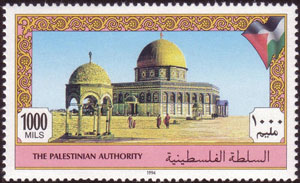
The Palestinian National Authority began in 1994 to issue stamps and operate postal services as authorized by the Oslo Accords.
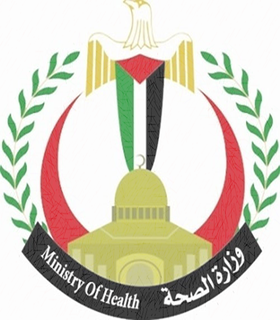
The Health Minister of the State of Palestine is Dr. Mai al-Kaila. The Health Minister heads the Ministry of Health of the State of Palestine, which changed its name from Ministry of Health of the Palestinian National Authority, following the November 29, 2012 vote in UN over upgrade of Palestine to non-member state status.
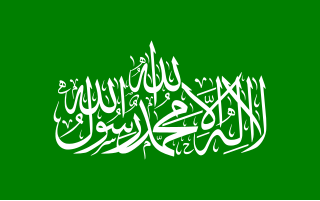
The governance of the Gaza Strip is carried out by the Hamas administration, led by Ismail Haniyeh, from 2007, until 2014 and again from 2016. The Hamas administration is often referred to as the Hamas government in Gaza.

The President of the Palestinian National Authority is the highest-ranking political position in the Palestinian National Authority (PNA). The President appoints the Prime Minister of the Palestinian National Authority, who normally requires approval of the Palestinian Legislative Council, and who shares executive and administrative power with the President.
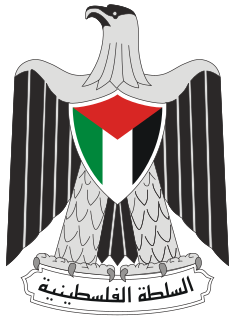
The Palestinian Legislative Council (PLC) is the unicameral legislature of the Palestinian Authority, elected by the Palestinian residents of the Palestinian territories of the West Bank and Gaza Strip. It currently comprises 132 members, elected from 16 electoral districts of the Palestinian Authority. The PLC has a quorum requirement of two-thirds, and since 2006 Hamas and Hamas-affiliated members have held 74 of the 132 seats in the PLC. The PLC's activity has been suspended in 2007 and remains so as of 2020, with the President issuing laws by decree, while PLC committees continue working at a low rate and parliamentary panel discussions are still occurring.